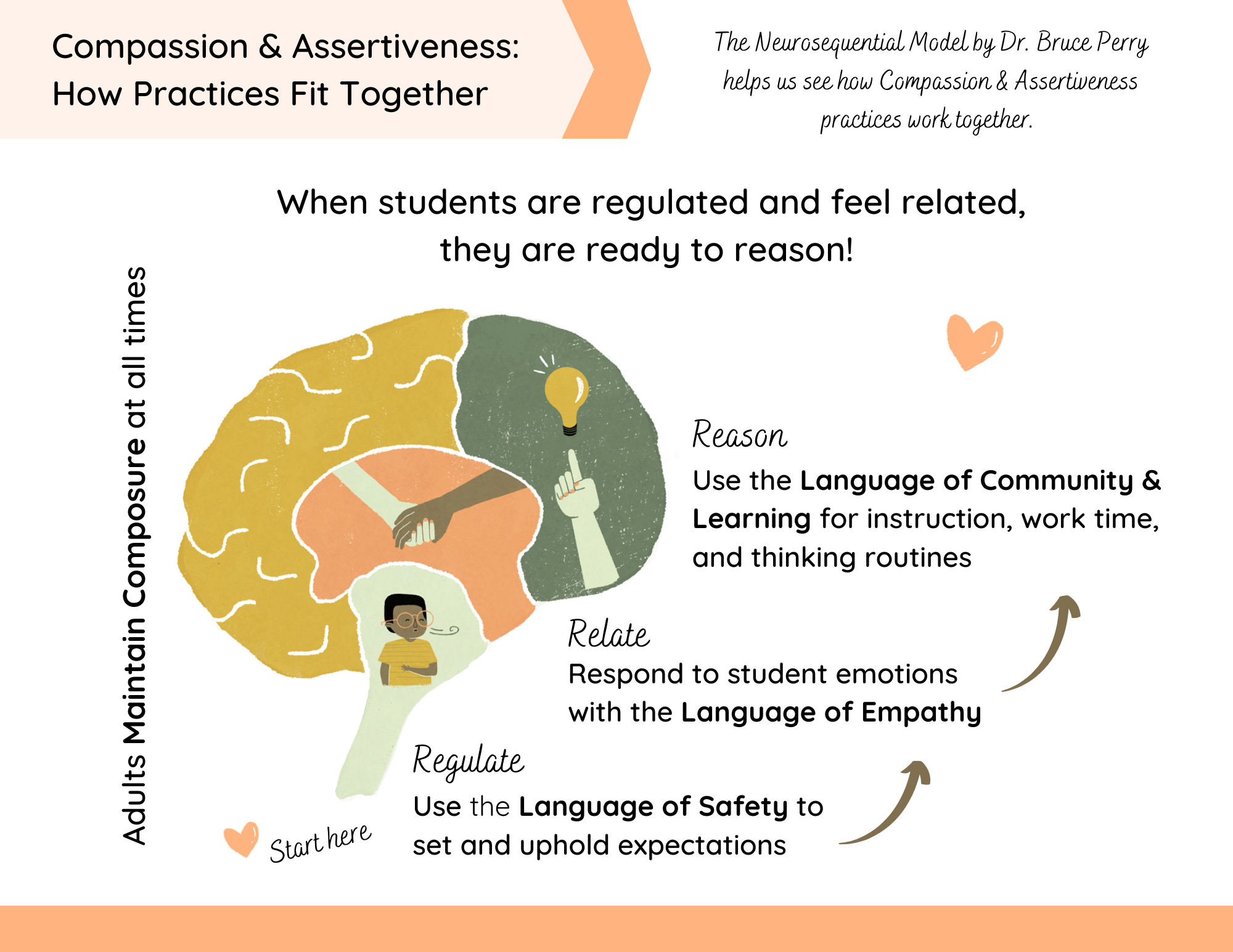Language of Empathy
Adults respond to children’s strong emotions with empathy.
This practice connects to Maintaining Composure, because adults must be composed in order to effectively listen and reflect back students’ feelings with empathy.
How to give empathy:
Listen attentively to students who are experiencing strong emotions.
Reflect back their feelings, as you believe they are experiencing them from their perspective, without judgment.
Maintain your composure - don’t take on their upset.
Continue listening and reflecting students’ feelings, thoughts, problems, needs, and values until they are calm.
You may also suggest that a student use the Centering Space if they need to process strong emotions using those tools.
Why this works:
Showing empathy acknowledges students’ feelings without judgment, which allows the feelings to dissipate.
Empathy demonstrates to students that you truly see and hear them, which forges strong connections.
Empathy proves to students that we take them (and their feelings) seriously, which builds trust.

